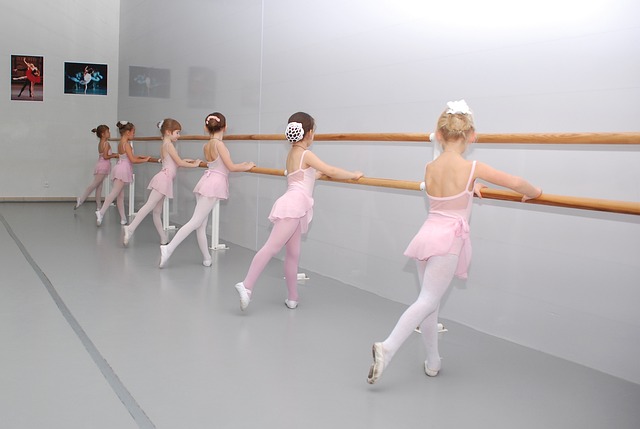Would you undertake an unusual workout if it meant losing a few pounds? If you answered yes, you should try dancing for weight loss. It makes no difference if you twerk, salsa dance, Zumba, or ballroom dance. Dancing is an excellent way to lose weight.
Weight Loss Twerking
When twerking became a popular dance move, “twerkouts” began to appear online. Twerkouts were workouts in which the main moves were booty popping and grinding. Doesn’t that sound ridiculous? It is for certain folks. For others, it’s a terrific way to begin moving and burn calories while having fun, whether alone or with the company.
Twerking isn’t the only dancing trend that can help you get in shape. It makes no difference what type of Dance you prefer. The idea is to discover something you enjoy doing so that time goes faster. Ballroom dancing burns calories, Hawaiian dance shapes gorgeous hips, African Dance helps you slim down, and Modern Dance helps you create powerful muscles.

Any physical activity can help you lose weight as long as you do it for an extended period of time and with sufficient intensity to burn fat and calories.
Weight Loss Dance Moves
You can learn dance movements to lose weight even if you have two left feet. Just Dance, for example, is a popular video game that turns dancing into a fun, competitive event.
You burn calories, tone up your muscles, and enhance your flexibility without you realizing it. At the same time, you learn to dance. There is no boredom, and you are always moving, so the workout is complete before you want to give up.
Beachbody’s CIZE Dance Workout is another popular technique for weight loss that many people use. The DVD program is available for purchase online. You learn professionally choreographed dancing moves in the privacy of your own home while also burning fat and calories.
If you don’t like screen-based dancing workouts, go to a gym, dance studio, or ballroom dance club. You can even attempt belly dancing to lose weight. There are even dancing workouts that can help you feel sexier. Pole dancing and strip-tease-style workouts are becoming more popular.
Have Fun in Order to Get Results
An enjoyable exercise routine is more likely to be maintained. The more consistent you are with your regimen, the more likely you are to see benefits.
Twerk (or whirl, shimmy, or plié) to your heart’s delight if you enjoy dancing. You’ll train the muscles in your hips and thighs, and if you engage your abs correctly, you’ll tighten the muscles that help you acquire a flat stomach.
To maximize the effectiveness of your dancing workout, combine it with a balanced, calorie-controlled diet.
Recruit friends (new or old, online or in person) to help you stick to your weight loss strategy. You’ll be more likely to stay with your strategy if you have a buddy—or dance partner—to hold you accountable.
For years, fitness aficionados have been burning calories on the dance floor to the beat of heart-pumping melodies and simple moves. Dance fitness teachers are continually modifying their choreography and creating new sessions influenced by styles ranging from hip-hop and Latin Dance to ballroom and ballet.
One of the best aspects of dance fitness courses is that they are suitable for people of all fitness levels. They also offer a number of activities that make it simple and enjoyable for people to join.
What Exactly Is Dance Fitness?
Dance fitness differs from technical or traditional Dance in that precise choreography and skill are not the primary focus. Participants don’t spend months perfecting a routine in preparation for a performance or recital; instead, they show up, work up a sweat while trying their hardest to follow an instructor, and leave feeling good about their workout.
Cardiovascular Dance Fitness
Cardiovascular exercise is emphasized in many dancing fitness classes. Instructors devise simple choreography to keep participants moving and raise their heart rates. Zumba, Jazzercise, LaBlast, Hip Hop Abs, TurboJam, and Bokwa are all examples of this type of exercise.
Dance Fitness at a Slower Pace
Some classes concentrate on various aspects of physical fitness. Barre lessons, for example, strive to enhance balance, coordination, core strength, and flexibility while also strengthening smaller, stabilizing muscles.
Similarly, pole dancing improves flexibility, and dance forms that combine Dance with yoga or martial arts (such as Yoga Trance Dance or Nia) provide a mind-body component to dance-focused workouts.
If you enjoy dancing and are seeking a fun approach to improving your physical fitness, there is bound to be a dance-based choice for you.
Suitable for All Skill Levels
Unless otherwise specified, most dance fitness classes are acceptable for all levels. Most have a low environmental impact. Classes are less likely to cause injury or undue pain since participants do not have to worry about sprinting, jumping, or other high-intensity, high-impact exercises.
Furthermore, the choreography is easily customizable. Make the motions smaller to make them less difficult. Alternatively, you can increase the intensity of an exercise by adding steps and exaggerating your actions. Most classes are appropriate for people of all fitness levels.
However, some types of Dance, particularly specialized classes like pole fitness and barre, do provide varied skill levels and intensities. Ask your gym or studio if there are any class levels you should be aware of before enrolling.
Aside from persons who have serious injuries or health difficulties, most people may join dancing fitness courses and feel good about it. If you have any concerns, speak with your doctor before beginning an exercise regimen.
Dance Fitness Styles
It’s a good idea to become acquainted with the various types of dance workouts before attempting them. Some classes are more daring (or even risqué) than others on purpose.
Dance Cardio
These workouts may feature hip swaying and chest pops, but the tempo is quick, and the goal is to get you to sweat. Cardio dancing classes are frequently focused on specific dance genres or forms.
Zumba, for example, is largely based on Latin dance, whereas Bokwa is based on African Dance, Doonya is based on Bollywood dance, LaBlast is based on ballroom dance, Jazzercise is based on jazz dance, Kerboomka is based on club-style Dance, and Broadway Bodies is based on Broadway dance.
You may discover that you favor one over the other. All of them, however, are intended to assist you in increasing your cardiovascular fitness.
Barre Exercises
Barre workouts are ballet-inspired routines that integrate components of yoga, Pilates, and lightweight strength training. As teachers guide students through routines, stress balance, stability, core strength, posture, and perfect form are emphasized.
In barre courses, you’ll discover high repetitions, small isolated “pulses,” and sluggish movements. The routines are mostly low-impact and moderately intense.
The concentration on muscle strength and toning is where barre really shines, making it a fantastic cross-training alternative for runners, bikers, and heavy lifters. Physique 57, Barre3, The Bar Method, Pop Physique, and Pure Barre are all popular barre workouts.
Dance of the Mind and Body
Mind-body Dance is a flowing pattern that integrates aspects of yoga, tai chi, or martial arts. These activities have a variety of benefits, including improved cardiovascular health, increased flexibility, and stress reduction.
Classes are often low-impact and low-to-moderate in intensity, making them ideal for beginners who want to ease into exercise. Nia and Yoga Trance Dance are two prime examples.
Dance of Sensuality
Sensual dance classes are more sexual in nature, and they encompass everything from belly dancing to pole dancing. Burlesque-style or striptease lessons, for example, are more focused on boosting your pulse rate, whereas pole and aerial classes are more focused on total body strength and flexibility.
Including Dance Fitness in Other Workouts
Muscular strength, muscular endurance, cardiovascular endurance, flexibility, and body composition are the five components of fitness.
Because most dancing courses cannot address all of these, it is a good idea to augment your favorite activity with cross-training activities.
Zumba and other cardio-focused dance sessions can be paired with strength training and stretching to improve muscle strength and flexibility.
To develop cardiovascular endurance and muscular strength, flexibility and muscular endurance classes such as barre can be coupled with kickboxing or boot camps.
If you’re new to dance fitness and want to try a class, there are a few things you should know ahead of time.
Investigate the Instructor Some fitness instructors are more qualified than others. Better feedback, better form, or better class management abilities are all possible. Others may be more qualified, with more certifications and more experience.
Conduct instructor research (most gyms and studios offer bios for their coaches). Then, set aside some time to try out a few classes. Your finest dance experience will be when you fall in love with both the workout and the Instructor.
Wear Appropriate Clothing Most dancing fitness sessions require only comfortable athletic clothing and a pair of athletic shoes to join. However, it is critical to inquire about studio-specific restrictions and guidelines about clothing and equipment.
Most barre studios, for example, demand participants to go barefoot or to bring a pair of studio socks with particular grips on the soles.
Pole lessons, meanwhile, recommend that participants wear short, tight-fitting shorts and refrain from applying the lotion prior to class because bare skin is preferable for clutching the pole.

Do Online Dance Fitness Classes Work? If money or time are constraints, home-based workouts are a terrific option. Studio classes can be expensive, and they may not always be convenient for your schedule. The good news is that online training platforms and DVDs are great ways to include dance fitness into your daily routine.
There are a few obvious limitations, such as the fact that most individuals do not have ballet barres or poles in their homes. However, if you’re searching for a simple aerobic dancing class or a barre routine that uses a chair instead of a barre, there are plenty of high-quality possibilities.
To Conclude
It’s not uncommon for new exercisers to feel embarrassed when taking their first dancing fitness class. Even “simple” choreography can be difficult to learn if you aren’t used to it. Rather than giving up, move to the side or back of the classroom and concentrate on having fun.
You may be self-conscious, but no one else is concerned with whether or not you have learned the moves. After a few courses, you’ll grow used to the methods and feel more at ease with the motions, allowing you to enjoy yourself and the advantages of the workout.

